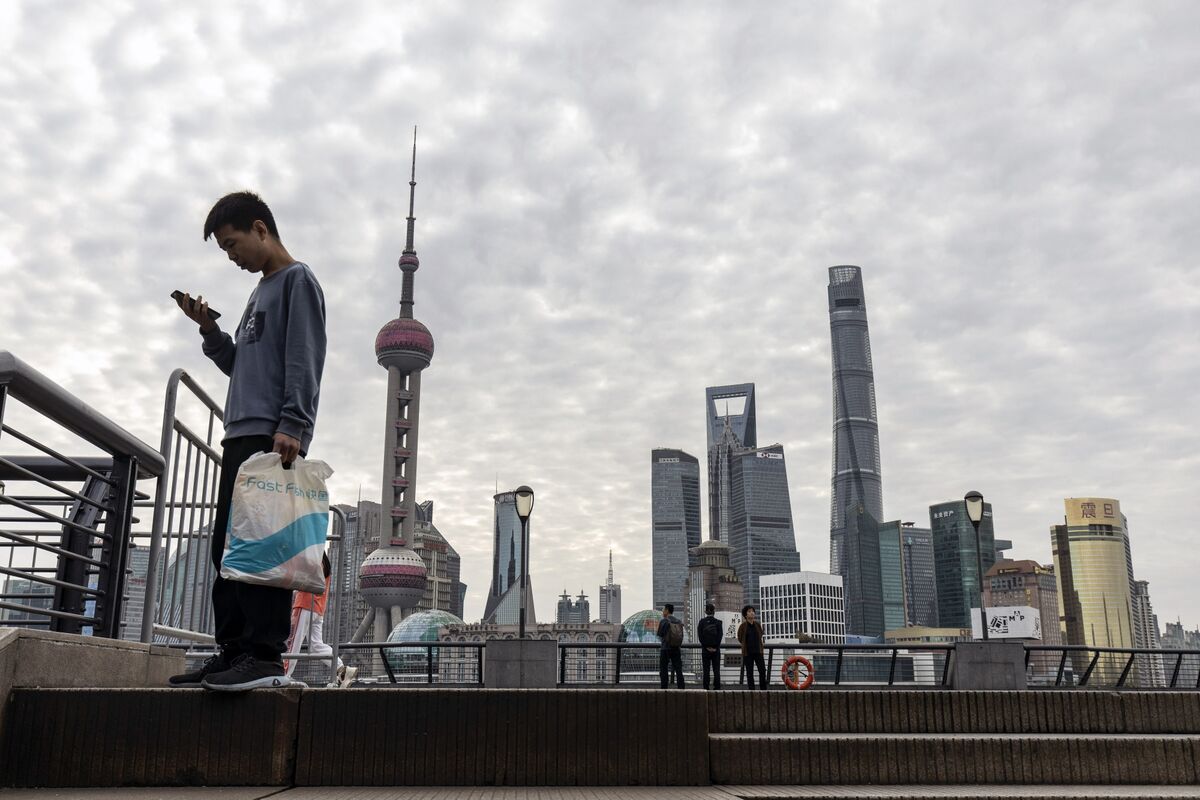
China’s deflation pressures worsened in October as consumer prices dipped back below zero and producer cost declines deepened, adding to expectations the economy needs more stimulus to shore up growth.
Consumer prices fell 0.2% last month after hovering near zero in the previous two months, according to data from the National Bureau of Statistics Thursday, lower than the median forecast in a Bloomberg survey of economists. Producer prices fell for a 13th straight month, dropping 2.6%.
China has battled stubbornly weak prices for much of this year. Consumer prices slipped below zero in July and have been teetering on and off the edge of negative year-on-year growth, undermining an August assessment by the People’s Bank of China that prices would rebound from the summer’s rough patch. Coupled with the ongoing declines in factory-gate costs, that’s led to calls for more support to counter deflationary pressures.
“Combating persistent disinflation amid weak demand remains a challenge for Chinese policymakers,” said Bruce Pang, chief economist for Greater China at Jones Lang LaSalle Ltd. “An appropriate policy mix and more supportive measure are needed to prevent the economy from a downward drift in inflation expectations that could threaten business confidence and household spending.”
Low inflation has been one of the main reasons cited by economists who argue that China’s economy is growing below its potential and needs more monetary and fiscal stimulus. Beijing has stepped up monetary and fiscal easing in recent months, such as cutting interest rates and the amount of cash banks must keep in reserve, as well as issuing additional sovereign bonds.
While the latest inflation data could make markets more cautious about China’s growth recovery, it also fuels hopes for additional policy support, said Xiaojia Zhi, head of research at Credit Agricole CIB. This includes a further cut to the reserve requirement ratio, she said, a view also shared by other economists.
Yu Yongding, a former adviser to the PBOC, said China needs to adopt more expansionary fiscal and monetary policies. Speaking Thursday at the Caixin summit in Beijing, Yu called for greater infrastructure investment, saying that the country still has a large room for stimulus.
China’s inflation rate has been low this year due to domestic factors such as a housing slump and weak consumer confidence, and international factors including a fall in global commodity prices from last year’s highs, and weak demand for Chinese made-goods leading to falling exports.
Recent consumer price declines have been driven by large drops in the price of pork, which is the country’s most-consumed meat and so has a heavy weighting in China’s consumer price index. Pork producers increased supply, betting on surging demand after the end of the country’s coronavirus restrictions at the end of last year. But the rebound fell short of expectations.
The weak CPI reading is mainly due to the slump in pork prices, said Tommy Xie, an economist at Oversea-Chinese Banking Corp Ltd. Combined with the weak PPI reading, this indicates persistently weak demand in China, he said.
There could be a silver lining. “This could potentially be seen as positive news for global central banks battling inflation. It suggests that despite the recent recovery of the Chinese economy, there is no immediate threat of China exporting inflation,” Xie added.
What Bloomberg Economics Says …
“China’s October price data, showing the CPI lurching back into deflation and the PPI posting a deeper drop, will put more pressure on the People’s Bank of China to loosen policy further. This reinforces our view that the PBOC will cut its one-year rate by 10 basis points next week and trim the required reserve ratio by 25 bps by year-end.”
— David Qu, economist
Read the full report here.
Food prices fell 4% from a year ago. Core CPI — which strips out volatile food and energy costs — rose 0.6%, weaker than the 0.8% increase a month earlier.
Deflation affects investor confidence as companies record income and profit in nominal terms. It increases their debt servicing pressure, a problem in a highly-leveraged economy such as China’s. It also hurts consumption as households may delay purchases on expectations that prices will fall further in the future.
China is expected to record a 0.5% CPI growth for full-year 2023, according to the median forecast of economists polled by Bloomberg. That’s well short of the government’s annual target of a rise of around 3%.
Recent efforts to support the economy have lifted demand for raw materials over the past few months, but that hasn’t necessarily fed through into prices. Crude oil imports have surged 14% in the year through October, while purchases of iron ore to make steel have risen 6.5%. But at the same time, processors from copper fabricators to steel mills and oil refiners have all seen their margins squeezed as prices have failed to keep pace with their input costs.
The offshore yuan was little changed at 7.2867 per dollar following the data release, kept within in a tight range since Thursday’s open. Chinese 10-year government bond yield held steady at 2.64%.


